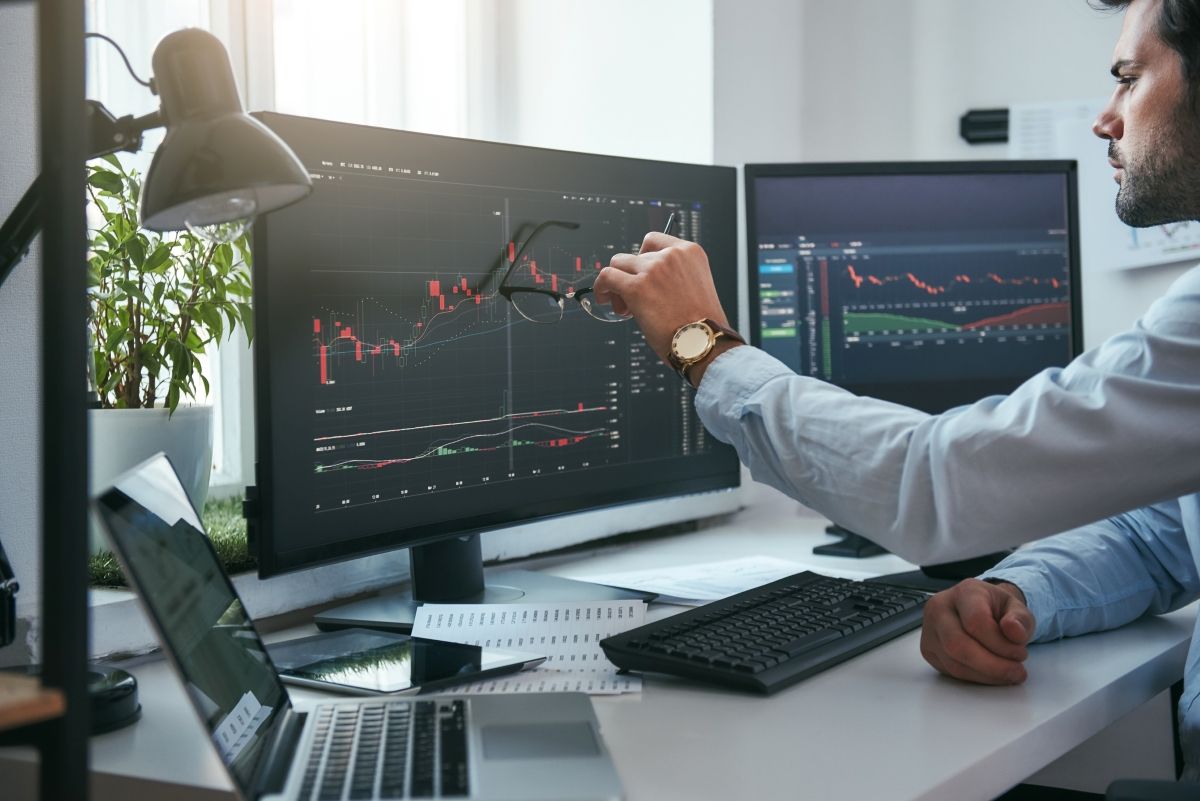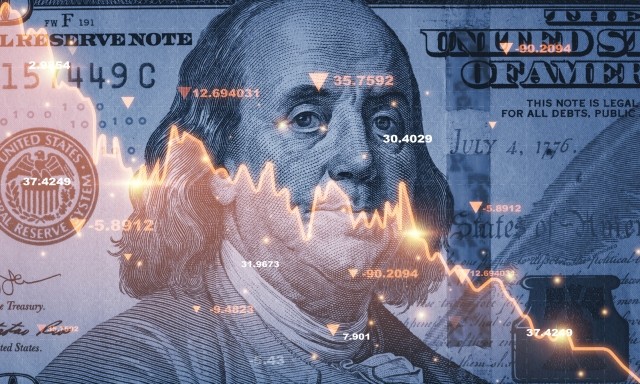Blog
Share Buybacks: Traps for the Unwary
| Share buybacks are making a comeback despite higher interest rates and a recent 1% excise tax. In this week’s D&O Notebook, my colleague Lenin Lopez provides insights into recent share-buyback-related SEC enforcement actions and offers strategies to mitigate the risk of becoming the subject of a regulatory investigation. – Priya Huskins |
One notable feature of the stock market in 2024 is the number of public companies announcing share buybacks and the expectation that this trend will continue. While share buybacks are generally well-received by investors, they aren’t without their critics. In addition, the Securities and Exchange Commission (SEC) has been focused on share buybacks for some time now, and a few companies have been severely fined for lackluster controls around how they’ve carried out their share buybacks.

This article will:
- Provide a brief overview of share buybacks
- Explain the SEC’s vacated share-buyback-related disclosure rule
- Share a few noteworthy SEC enforcement actions related to share buybacks
- Offer strategies to help companies mitigate risk in connection with carrying out share buybacks
Share Buybacks: A Quick Refresher
Share buybacks, or repurchases, refers to the practice of a public company purchasing its own shares. Buybacks can be structured in several ways, including through open market purchases, tender offers, privately negotiated transactions, and accelerated share repurchases. Share buybacks have the effect of reducing the number of outstanding shares, thereby increasing the per-share price of those shares still in the market. So, from an investor perspective, you can see the appeal. A company announces a share buyback, executes the plan, and all other things being equal, an investor’s shares will typically become more valuable.
Buybacks, like dividends, are a way for companies to return capital to investors, which of course assumes that these companies have strong cash reserves to deploy. Buybacks have a few advantages when compared to dividends. For instance, shareholders may find buybacks to be more tax-efficient since the taxable event associated with any gains is tied to the shareholder selling their shares, which is up to the shareholder to effect. Also, shareholders can avoid taxation altogether by declining to participate in the buyback. Contrast this with dividends, which are taxable in the year issued and treated as income to the shareholder upon receipt of the dividend. Another advantage is the timing. Share buyback programs can generally be started and paused by the company to adapt to changing financial conditions.
To be fair, there are also some disadvantages associated with share buybacks. One of the more recent drawbacks is a new 1% excise tax on the net share repurchases in a tax year that are made by certain companies. However, based on the number of share buybacks that have been announced as of late, it doesn’t seem like the new 1% excise tax is a deal breaker. Also, remember how I said there was an advantage around timing? That can also be a disadvantage if a company executes a share buyback when its stock is trading at inflated prices. Companies likely won’t know until after the fact, but deploying cash on hand to buy back shares at a premium isn’t a good look.
| One of the criticisms associated with share buybacks is around the lack of transparency and how it can be difficult to determine whether buybacks are motivated by factors other than maximizing shareholder value. |
The SEC has noted that research has found that companies that would have narrowly missed an earnings per share target were more likely to have engaged in buybacks. There have also been concerns regarding how buybacks may benefit certain executives who receive equity-linked compensation in such a way that other shareholders would not.
See this article from Skadden for more information regarding the advantages, disadvantages, and legal implications of share buybacks.
The SEC’s Vacated Share Buyback Disclosure Rule
In May 2023, to “lessen some of the information asymmetries inherent between issuers and investors in buybacks,” the SEC adopted amendments requiring public companies to disclose more information regarding their share repurchases. Notably, under the new disclosure requirements, companies that executed buybacks would have to:
- Disclose daily repurchase activity quarterly or semiannually
- Check a box indicating if certain directors or officers traded in the relevant securities within four business days before or after the public announcement of an issuer’s repurchase plan or program
- Provide narrative disclosure about the issuer’s repurchase programs and practices in its periodic reports; and
- Provide quarterly disclosure in an issuer’s periodic reports on Forms 10-K and 10-Q related to an issuer’s adoption and termination of 10b5-1 trading arrangements.
These new requirements would have been a significant enhancement to the existing reporting regime, which just required quarterly disclosure of any purchase made by or on behalf of a company of shares or other units of any class of the company’s equity securities, aggregated monthly.
The new disclosure requirements were going to kick in for most companies in connection with this year’s annual report (e.g., Form 10-K or Form 20-F). However, litigation initiated by the Chamber of Commerce and other parties threw a wrench in all that. The court in that case ruled that “the SEC acted arbitrarily and capriciously in failing adequately to (1) respond to petitioners’ comments and (2) substantiate the rule’s benefits.” The court gave the SEC 30 days to correct the deficiencies. Ultimately, as the SEC couldn’t meet the deadline and the court was unwilling to grant the SEC an extension, the court vacated the rules. End result: The disclosure requirements revert to those in effect prior to the now-vacated rules’ effective date.
| While the SEC lost its case, the fact that it went through the effort of getting final rules this close to the finish line speaks volumes as to how focused the agency is on share buybacks. |
In that spirit, it’s worth looking at recent enforcement actions involving share buybacks.
SEC Enforcement Actions: What We Can Learn
Below are two relatively recent SEC enforcement actions against two different companies involving their respective share buyback programs. Directors and officers of companies engaged in or contemplating buybacks will want to learn the lessons these cases provide, both from how the SEC is leveraging novel theories in these enforcement actions and the pitfalls to avoid when structuring processes around your own share buybacks.
Andeavor LLC ($20 Million Penalty): Inadequate Controls Regarding Initiation of Share Buyback
In October 2020, the SEC announced it settled charges against Andeavor for controls violations related to its share buyback plan. Andeavor agreed to pay a $20 million penalty to settle. A key piece of information in this case is that Andeavor purchased shares under its share buyback plan while it was in discussions with Marathon Petroleum to be acquired by Marathon. If you are getting a faint hint of a potential insider trading case, you wouldn’t be alone, but the SEC’s order paints a different picture.
According to the SEC, the Andeavor board had authorized a share buyback program in 2015 and 2016. The authorization delegated authority to the company to carry out those repurchases from time to time. While the order didn’t cite the exact verbiage from the board resolutions, given how formulaic these resolutions are, certain members of management were likely authorized to determine the timing and amounts of share buybacks. Notably, the SEC indicated that the authorizations required the company to comply with the company’s securities trading policy. As one would expect, the policy prohibited the company from trading in its securities while in possession of material nonpublic information (MNPI).
But, as noted earlier, Andeavor was in discussions to be acquired by Marathon. Those discussions initially took place in 2017 but were suspended that same year. Fast forward to February 21, 2018, and Andeavor’s CEO directed the CFO to initiate a $250 million share buyback over several weeks. The day after the CEO directed the CFO to initiate the buyback, Andeavor’s legal department approved a 10b5-1 plan to buy back $250 million shares. Andeavor completed the share buybacks within about four weeks.
As a reminder, 10b5-1 plans provide an affirmative defense to insider trading if certain conditions are met. A hallmark of these plans is that they are entered into when the trader doesn’t have MNPI, and the trader isn’t allowed to influence how trades are made under the plan once effective. See this article for more information regarding 10b5-1 plans and the SEC’s new rules on the topic.
Two additional pieces of information are worth noting: (i) when Andeavor’s CEO reached out to the CFO to initiate the buyback, the CEO had a meeting scheduled with his counterpart at Marathon to resume acquisition discussions; (ii) two weeks after the buyback was completed, Andeavor’s CEO and Marathon’s CEO reached an agreement in principle for Marathon to acquire Andeavor. So yes, there were ongoing discussions between the CEOs during the buybacks.
The SEC’s order stated that Andeavor’s legal department approved the 10b5-1 plan “after concluding, based on a deficient understanding of all relevant facts and circumstances regarding the two companies’ discussions, that those discussions did not constitute material non-public information.” Ouch. Digging into the order, Andeavor’s process to assess the materiality of the acquisition discussions was described by the SEC as “abbreviated and informal.” Further, the company’s process did not allow for a proper analysis of the probability that Andeavor would be acquired. The SEC suggested that a better approach would have been for the legal department to have conferred with “persons reasonably likely to have potentially material information regarding significant corporate developments prior to approval of share repurchases.” Reading between the lines, it appears that the legal department may not have connected with the CEO and if the team did, they may not have asked the right questions.
If you’re thinking what I’m thinking, the CEO shouldn’t have instructed the CFO to initiate the buyback in the first place.
Ultimately, the SEC didn’t bring insider trading violation charges since the legal department believed, however mistakenly, that the acquisition discussions weren’t material. Rather, the SEC focused on Andeavor’s failure to implement and maintain a system of internal accounting controls around the authorization and execution of the company’s share buyback plan.
Charter Communications Inc. ($25 Million Penalty): Deficient Use of 10b5-1 Trading Plans in Share Buybacks was the Result of Insufficient Internal Accounting Controls
In November 2023, the SEC announced that it settled charges against Charter Communications for violating internal accounting controls requirements relating to its stock buybacks. Charter agreed to pay $25 million to settle. At a high level, Charter’s board approved a share buyback within certain financial parameters and guidelines. For buybacks that were to occur during Charter’s closed trading windows, the board’s authorizations required that the company implement 10b5-1 plans.
In Charter’s case, the 10b5-1 plans it entered included a provision that would trigger trades if the company elected to complete certain debt offerings. The SEC interpreted this provision to give Charter discretion over how the trades were made under the plan. As a result, the SEC argued that Charter didn’t have reasonably designed controls to analyze whether the discretionary element of the 10b5-1 plans was consistent with the board’s authorizations. Like the Andeavor case, the SEC refrained from going the insider trading violation route and instead focused on internal controls. Quite an elegant approach. This let the SEC avoid having to expend the cost and time of investigating whether Charter’s buybacks made under the 10b5-1 plans were executed at a time that Charter had MNPI.
Strategies to Help Mitigate Risk When Carrying Out Share Buybacks
Andeavor and Charter were the first two companies that were taken to task for internal control issues associated with their share buybacks. It’s likely that they won’t be the last, especially in light of the SEC’s continued focus on insider trading enforcement, 10b5-1 plans, and share buybacks. What follows are strategies to help companies avoid having the SEC come knocking on their doors.
Ensure That the Individuals Authorized by the Board to Initiate Buybacks Understand the Parameters and Appreciate Consequences Associated with Noncompliance
The form of board resolutions tied to share buyback authorizations doesn’t typically vary all that much. They are intentionally written broadly to provide the company with the flexibility to execute buybacks in several ways. That broadness may give those authorized to initiate the share buybacks a false sense of independence. To avoid that and as a general practice, educate the authorized individuals about the relevant parameters, which at a minimum would include not initiating a buyback when the company is aware of MNPI. One point to emphasize here is that the test of awareness is at the company level, and the MNPI inquiry includes all executives, employees, and even directors. Had something like this been implemented at Andeavor, the company wouldn’t have likely made it into this article.
| Lastly, for in-house legal teams, real-world horror stories tend to garner the most attention and inspire a stronger sense of awareness around compliance. This is where sharing details of the Andeavor and Charter cases with your finance and legal colleagues, including the settlement amounts, can really help. |
Establish a Robust Process to Assess Company MNPI Ahead of Initiating a Share Buyback
Perhaps one of the biggest takeaways from cases like those discussed above is that companies need to have effective controls in place to ensure share buybacks are made in accordance with the board’s and/or management’s authorization. Accordingly, it’s important to take reasonable steps to ensure that the individual(s) evaluating whether a company has MNPI have a method to learn of that information.
In the context of share buybacks, as noted above, the question is not whether one individual has MNPI—it’s about the company. An approach that some companies have implemented is having the company’s general counsel send an email to certain executive officers to confirm that the company is not in possession of MNPI before initiating a share buyback. The CEO, CFO, and treasurer should generally be included in the list of recipients, as well as others depending on the company. It may also be a good idea to consider sending a similar email (or better yet, a call) to the chair or the lead director of the board, as applicable. Lastly, before sending an email like this, it would be a good idea to socialize the purpose of the email and how it’s a critical element of the company’s internal controls and procedures. For everyone other than the CEO, CFO and treasurer, it is advisable to not share details beyond what is included in the email. Their inclusion in an email with the CEO and CFO is typically enough to motivate a swift response.
Here's an example email:
From: [General Counsel]
To: [CEO, CFO, Treasurer, CISO, Head of Litigation, Head of IR, Head of Comms, Head of R&D, Head of Regulatory]
Re: [CONFIDENTIAL][Action Requested] Confirmation re: [Company Name] Material Nonpublic Information
The company is contemplating entering a transaction in the coming days. Before initiating the transaction, we must confirm whether the company is in possession of any material nonpublic information (MNPI) regarding the company that hasn’t been adequately disclosed to the public. As an example, [company] MNPI may include pending M&A, pending significant legal/regulatory proceedings or settlements, a significant cybersecurity vulnerability/breach, or a pending announcement related to a new collaboration or loss of a partnership. If you are unsure whether you are in possession of MNPI, please contact me by telephone ASAP at [number].
If you are not in possession of [company] MNPI, we ask that you confirm by replying to this email by [date]. Additionally, if you become aware of [company] MNPI after replying to this email, you must contact me immediately.
Lastly, you must treat this email as confidential.
Parting Thoughts
The cost of a share buyback program should not include having to pay a multi-million-dollar penalty to the SEC for failing to implement effective internal controls. This is separate and apart from the legal expense, distraction, and potential follow-on litigation that would come along with an SEC investigation. Implementing the strategies discussed above will go a long way to help avoid these unnecessary headaches and costs
Author
Table of Contents










